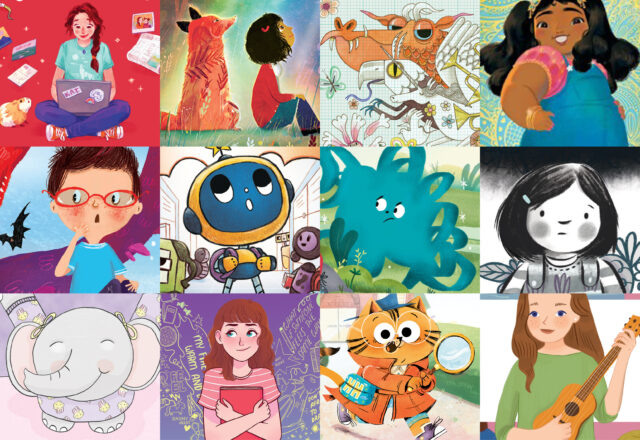Help for Cutting and Other Self-Injury
by
Rachel Ehmke
Help for Cutting and Other Self-Injury
When kids intentionally hurt themselves, often by cutting or scratching their skin, as a way to manage difficult emotions
Clinical Experts: David Friedlander, PsyD , Ron J. Steingard, MD
en EspañolWhat You'll Learn
- Why do kids cut or hurt themselves?
- What are signs of self-injury?
- How can parents help?
Quick Read
The most common way kids self-injure is by cutting themselves. Some kids also burn themselves or pick at skin and wounds.
While cutting might look like suicidal behavior, it actually isn’t. Some kids say they hurt themselves because it distracts them from the intense emotional pain that they are feeling. Other kids say they do it because they feel numb. For these kids, hurting themselves helps them feel something. While many people try to keep their self-injury a secret, for others it can be a way to ask for help.
Kids often keep cutting because it becomes a way they cope with how they’re feeling. And the longer they practice self-injury, the more they’ll come to rely on it.
If you think your child might be self-injuring but you aren’t sure, there are signs to look for. Suspicious-looking scars, wounds that won’t heal, and always wearing long-sleeved shirts can all be signs.
If your child is self-injuring, it is important to get help. Talk to a mental health professional about getting your child an evaluation. This can help determine what your child is struggling with and what treatment will be most effective. Therapies called dialectical behavior therapy (DBT), cognitive behavior therapy (CBT) and family therapy can all help.
Full Article
6 min read
There are few things more disturbing for moms and dads than finding out that your child is intentionally hurting themselves. Unfortunately, it’s very common, especially among girls. Experts call it “self-injury,” and as many as a quarter of all teenagers do it.
The most common form of self-injury is cutting or scratching the skin with anything that can draw blood, such as razors or even paperclips and pen caps, but people also self-injure by burning themselves, picking at skin and wounds, or hitting themselves. They often start around puberty.
When a person develops a habit of cutting their arms it might look like suicidal behavior, but it actually isn’t. People who self-injure aren’t trying to kill themselves, they are trying to alleviate some emotional distress they are feeling. However, the behavior indicates a depth of psychic pain that could lead to a suicide attempt. The behavior is also inherently dangerous because people who self-injure may hurt themselves more seriously than intended or develop infections or other medical complications.
Understanding the drive
It’s hard to understand why anyone would want to intentionally hurt themselves or why that injury would come as a relief, as many self-injurers describe it. Some people report that it serves as a distraction from some other intense emotional pain, says Ron Steingard, MD, a psychiatrist at the Child Mind Institute.
Others self-harm because they feel deadened inside. “They’ve locked down so tightly because of whatever’s going on in their lives that they feel they’re incapable of feeling anything at all,” says Dr. Steingard. “So they hurt themselves in order to feel something.”
In some cases self-injury can also become a way of communicating. When a young person is found to be cutting, it’s likely to elicit empathy and concern from parents and other adults. Next time they are feeling desperate, they might use self-harm as a way to communicate their feelings.
A way to cope
But self-injury isn’t always a form of communication. Some kids are very secretive about the habit, and are focused only on ameliorating their own pain, not sharing it. It’s what clinicians call a maladaptive coping tool: Even though self-injury isn’t the best way to manage a problem, it might bring temporary relief.
Unfortunately that relief makes self-injurious behavior very reinforcing, so kids come to rely upon it as a way to deal with their painful feelings. And the longer they practice self-injury the more reinforcing it becomes.
Red flags for cutting
If you suspect that your child may be self-harming but you’re not sure, look for these signs:
- Talking about self-injury
- Suspicious-looking scars
- Wounds that don’t heal or get worse
- Cuts on the same place
- Increased isolation
- Collecting sharp tools such as shards of glass, safety pins, nail scissors, etc.
- Wearing long-sleeved shirts in warm weather
- Avoiding social activities
- Wearing a lot of band aids
- Refusing to go into the locker room or change clothes in school
Triggers
The impulse a teenager feels to harm themself is almost always triggered by a specific event in their life. The most common “trigger” for cutting is feeling rejected: by a romantic interest, by their close friends, or by a general feeling of being left out or criticized.
Cutting can also be copy-cat behavior inspired by videos and images that show other people cutting.
Getting self-harm help
If you discover that a child has been self-harming, even if they say it was a one-time thing, it’s important to get help. It’s true that kids might experiment with self-injury, especially if they have friends who are doing it, but it’s a serious and dangerous behavior, and you don’t want to ignore what might be a real mental health issue.
- Evaluation: To begin with, you should have your child evaluated by an experienced mental health professional to find out what their reasons for self-harm are and what emotional difficulties they’re experiencing.
- Dialectical behavior therapy (DBT): One highly recommended treatment is DBT, in which a psychologist works with your child to help them learn how to tolerate uncomfortable feelings, anger, anxiety and rejection without resorting to cutting.
- Cognitive Behavioral therapy (CBT): In CBT, a psychologist teaches your child to challenge negative, distressing thoughts, to recognize the pattern and train herself to think outside it. In many cases, particularly with teenagers, this treatment is very successful.
- Family Therapy: If there are things going on at home–fighting, job loss, a death–that could be the source of your child’s emotional troubles, family therapy is a good way to begin treatment.
- Medication: Often if there is another disorder involved, a doctor will prescribe medication to treat that condition. The combination of medication and psychotherapy is very successful at treating kids who self-harm.
Finally, Dr. Steingard recommends that families try to be open and supportive. “This is a behavior that’s very hard for people to get inside and empathize with. But it isn’t something that a person can just stop; it’s something that needs to be understood.”
Important:
If you or someone you know needs help now, call 988 to reach the Suicide and Crisis Lifeline.
This article was last reviewed or updated on November 6, 2023.
Topics
Rachel Ehmke
Rachel Ehmke is a freelance writer and the former managing editor at the Child Mind Institute. She holds a BA … Read Bio
Was this article helpful?
Related Reading
-
 How Are Self-Injury and Suicide Related?
The intent is different, though one can lead to the other
How Are Self-Injury and Suicide Related?
The intent is different, though one can lead to the other
-
 Teen Suicides: What Are the Risk Factors?
Temperament, family and community all play a role
Teen Suicides: What Are the Risk Factors?
Temperament, family and community all play a role
-
 What to Do if You’re Worried About Suicide
A parent's guide to helping a child in distress
What to Do if You’re Worried About Suicide
A parent's guide to helping a child in distress
-
 Complete Guide to Substance Use + Mental Health
When children are struggling with both a substance use disorder and a mental health disorder, they are said to have co-occurring disorders. Here are steps…
Complete Guide to Substance Use + Mental Health
When children are struggling with both a substance use disorder and a mental health disorder, they are said to have co-occurring disorders. Here are steps…
-
 How Can We Help Kids With Self-Regulation?
Some kids need help learning to control their emotions and resist impulsive behavior
How Can We Help Kids With Self-Regulation?
Some kids need help learning to control their emotions and resist impulsive behavior
-
 Quick Facts on Self-Injury
Intentionally cutting or scratching the skin to alleviate distress is common among teenagers.
Quick Facts on Self-Injury
Intentionally cutting or scratching the skin to alleviate distress is common among teenagers.
-
 My daughter who is self-harming has agreed to see a counselor. Is there anything else we can do?
Supporting her will be important
My daughter who is self-harming has agreed to see a counselor. Is there anything else we can do?
Supporting her will be important
More Related




